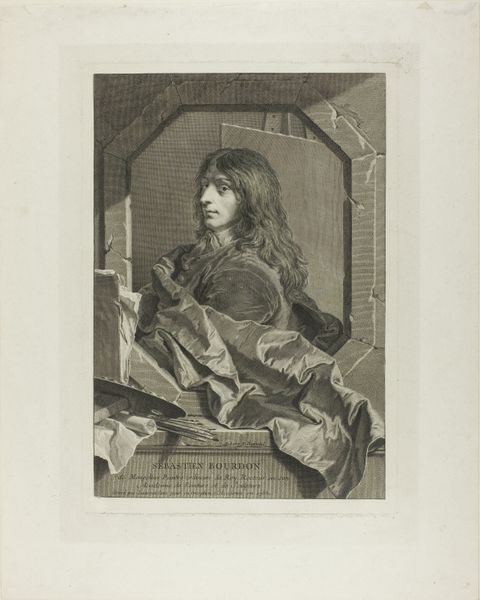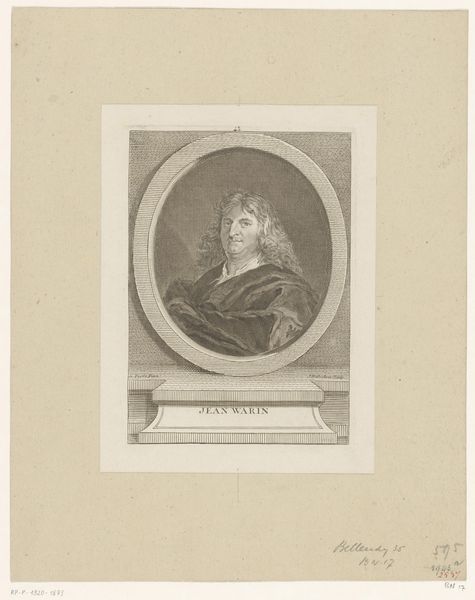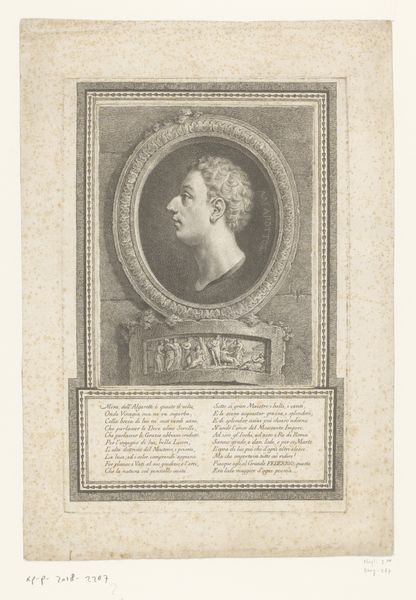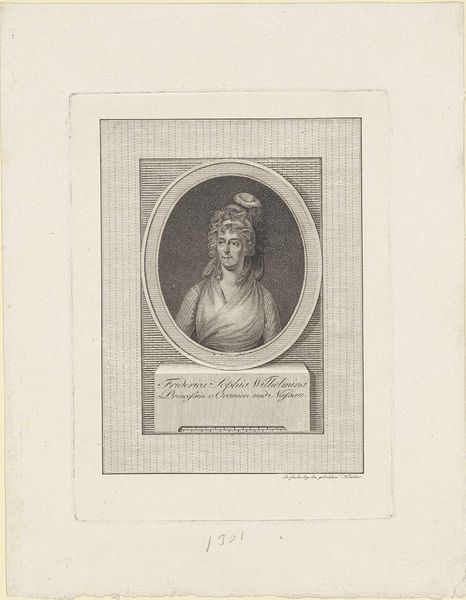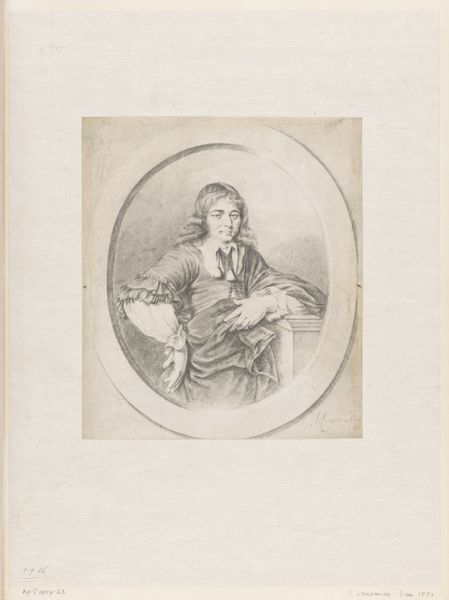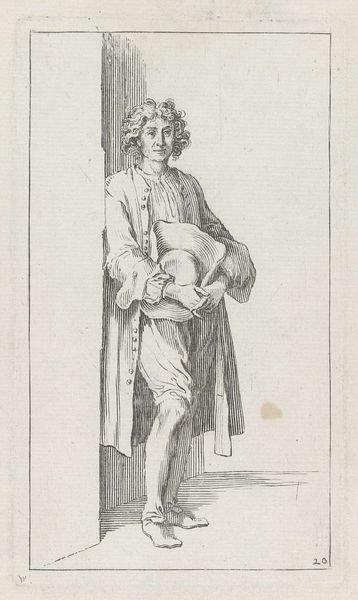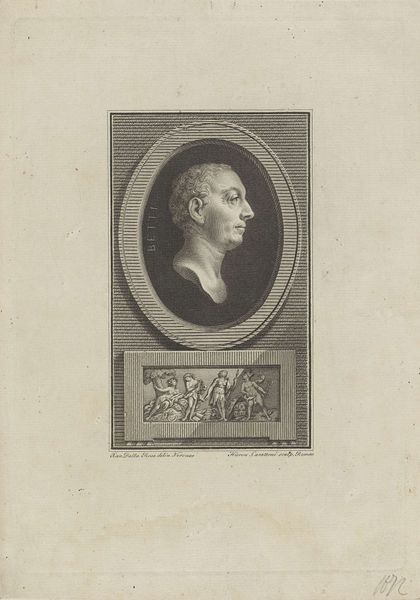
print, engraving
#
portrait
#
baroque
# print
#
engraving
Dimensions: height 159 mm, width 105 mm
Copyright: Rijks Museum: Open Domain
Curator: Here we have a fascinating engraving dating back to 1751, "Portret van Jan Abel Wassenbergh" by Pieter Tanjé, currently held in the Rijksmuseum collection. Editor: The piece gives off a formal but friendly vibe. The way the man is framed in that oval, along with his engaging expression, immediately draws you in, despite its size as a print. It feels intimate and performative. Curator: Exactly, and that's where the societal context becomes interesting. Tanjé was known for portrait engravings. Prints like this served an important purpose—they allowed images and ideas, including those of prominent citizens, to circulate more widely in 18th-century Dutch society. It helped to shape and disseminate public images and solidify social status. Editor: The secondary figure appearing out of focus behind him... a kind of "ghosted" effect of another self that perhaps speaks of othering... an imposed representation. Also I read something that appears as the OCR 'kanyanaren hare.' If you know of its true context it would be interesting if you knew how it refers or responds to gender and the construction of beauty ideals. Curator: That spectral presence certainly adds layers of interpretation, the "kanyanaren hare" being 'buried in the artist's heart' certainly connects to that element of subjectivity and projection on Wassenbergh's part. Looking closely, one can appreciate Tanjé’s technical skill; the textures and tones achieved with such precision on metal are quite remarkable. Editor: Yes, and think about who this portrait might have reached at the time. These weren't simply neutral documents, but tools to perpetuate class structures, with an opportunity to contest what were, perhaps, constrained perspectives and archetypes. It provokes so much further questioning. Curator: It is that very dialectic—the intention and reception that makes this piece so rewarding to unpack. Editor: A compact image brimming with social narrative, technical artistry, and historical echoes, certainly demanding a contemporary re-appraisal.
Comments
No comments
Be the first to comment and join the conversation on the ultimate creative platform.

